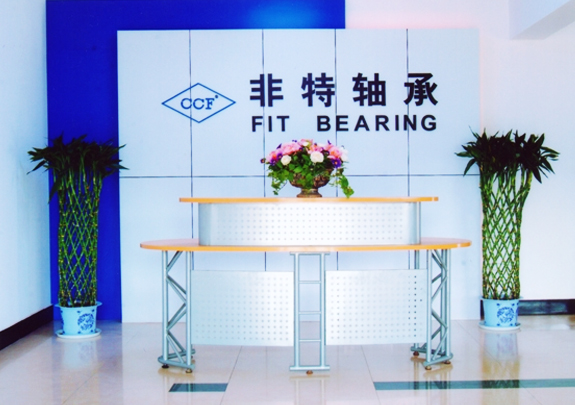Hollow Shaft
VIEW DETAILS
VIEW DETAILS
VIEW DETAILS

Zhejiang Fit Bearing Co., Ltd. was established in November 2003 with a registered capital of USD 2 million. The plant covers an area of 35,000 square meters and 20,000 square meters, with more than 120 workers and more than 20 technical management personnel.
At the beginning of its establishment, the company specialized in producing all kinds of low-noise long-life ball bearings. As a professional China Stainless Steel Shafts Suppliers and Stainless Steel Shafts Manufacturers, After years of development in the bearing industry, we have accumulated rich experience in production and management. In 2013, we began to vigorously develop agricultural machinery parts and construction machinery parts. At present, we have formed a team with exquisite technology and excellent management, capable of R&D, manufacturing, sales and service in the bearing industry and agricultural machinery parts. After years of hard work and development, we have formed a capable R&D and manufacturing team. They have rich knowledge and experience in materials, heat treatment, machining and grinding. There are currently 9 professional R&D engineers responsible for the development of new products.
The main shaft bearing is the most important component in the engine. If the main shaft bearing fails, it will directly cause the engine to stop running. In order to improve the reliability of the eng...
Read MoreBearing failure is a common problem during the operation of bearings, and the form of wear is a type of bearing failure. Wear can also cause significant damage to bearings, and repairing a few pieces ...
Read MoreThe working temperature of cylindrical roller bearings depends on various factors, including the heat output of all relevant heat sources, the heat flow rate between heat sources, and the heat dissipa...
Read MoreHow do you mitigate the risk of galling or seizing in stainless steel shaft applications?
1. Lubrication: Apply a suitable lubricant to the stainless steel shaft before assembly. This will help reduce friction and prevent galling or seizing.
2. Use anti-seize compounds: Apply an anti-seize compound to the stainless steel shaft, especially when it is in contact with other metals, to minimize the risk of galling. These compounds create a protective barrier between the surfaces, reducing friction and preventing seizure.
3. Avoid excessive tightening: Proper installation torque is crucial to prevent galling. Avoid overtightening the fasteners or applying excessive pressure on the stainless steel shaft during assembly.
4. Use corrosion-resistant alloys: Utilize stainless steel alloys that are specifically designed to resist galling, such as those containing molybdenum or nickel. These alloys have better anti-galling properties compared to standard stainless steel.
5. Surface finish and hardness: Ensure the stainless steel shaft has a smooth surface finish by properly machining or polishing it. Additionally, the hardness of the shaft should be sufficient to resist galling. Consult with a materials expert to determine the optimal surface finish and hardness for your specific application.
6. Proper thread design: If the stainless steel shaft has threaded portions, ensure that the threads are properly designed to minimize the risk of galling. Consider using thread lubricants or coatings designed to prevent galling in high-pressure applications.
7. Material compatibility: Take into account the compatibility between the stainless steel shaft and other materials it comes into contact with. Consider factors such as galvanic corrosion, differing coefficients of thermal expansion, and material hardness to select compatible materials and minimize the risk of galling or seizing.
How do you balance the requirements for strength and weight in the design of stainless steel shafts?
1. Material Selection: Choose an appropriate grade of stainless steel that provides the necessary strength while keeping the weight as low as possible. There are various stainless steel grades available, each with different strength-to-weight ratios.
2. Design Optimization: Optimize the shaft design to minimize material usage while maintaining the required strength. This can be achieved by using computer-aided design (CAD) software and performing structural analysis to determine the optimal shaft dimensions and shape.
3. Hollow shaft design: Consider using a hollow shaft design to reduce weight while maintaining strength. By removing material from the center of the shaft, weight can be significantly reduced while still achieving the necessary strength.
4. Fabrication Techniques: Utilize advanced fabrication techniques like cold working or heat treatment, which can increase strength and improve the mechanical properties of the stainless steel without significantly adding to its weight.
5. Evaluation of Stress and Load Factors: Conduct a detailed analysis of the stress and load factors involved in the application to ensure that the shaft is not overdesigned, resulting in unnecessary weight. This analysis can also help identify areas where additional strengthening or reinforcement may be needed.
6. Material Thickness Optimization: Carefully analyze the required thickness of the stainless steel shaft based on the load and stress requirements. Thinner sections can help reduce weight while still meeting strength requirements.